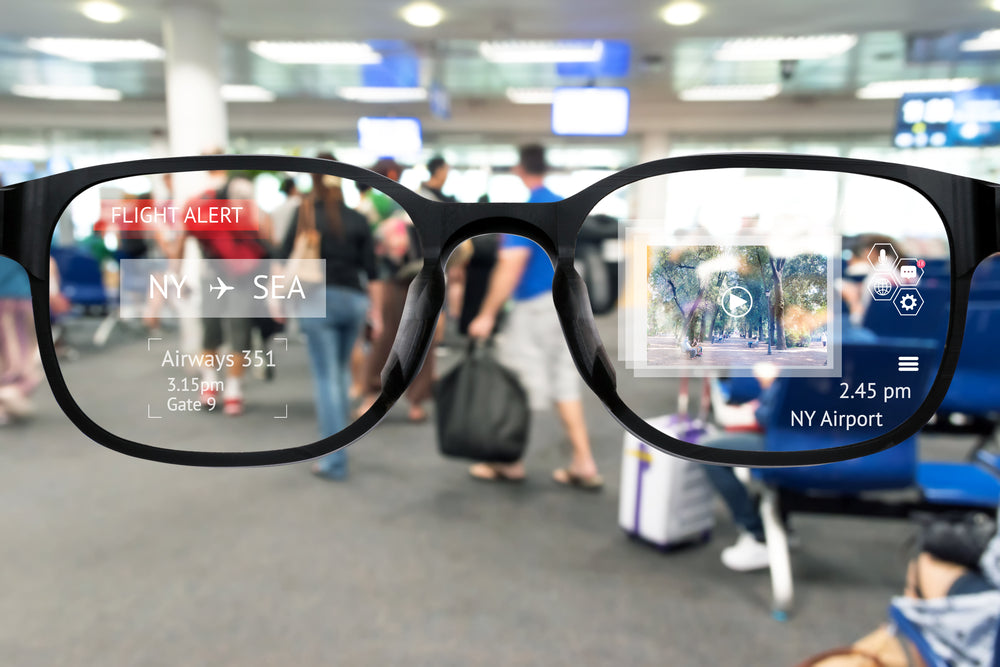
Principle
As shown in the figure above, the coupling light into the waveguide is usually a reflector or prism. When the light reaches the front of the glasses after multiple rounds of total reflection, it will encounter a "semi-transparent and semi-reflective" mirror array. This is the structure of the coupled light exit waveguide, which is the "light combiner" in the geometric optical waveguide.
"Semi-transparent" mirrors are surfaces embedded in the glass substrate and formed at a specific Angle to the transmitted light. Each mirror reflects part of the light off the waveguide and into the human eye, while the rest of the light is transmitted through the waveguide and continues to travel through the waveguide. This part of the moving light then meets another "half-transparent, half-reflective" mirror, and the above "reflection-and-transmission" process is repeated until the last mirror in the array reflects all the remaining light off the waveguide and into the human eye.
EPE
In traditional optical imaging systems, the image usually has only one "exit", called the exit pupil. The "semi-transparent and semi-reflective" mirror array here is equivalent to making multiple copies of the exit pupil along the horizontal direction, and each exit pupil outputs the same image, so that the eye can see the image when it moves laterally, which is the one-dimensional pupil expansion technique (1D EPE).
Suppose that a beam with a diameter of 4mm enters the "entrance pupil" of the waveguide. Since the waveguide is only responsible for transmission and does not enlarge or shrink the image, the "exit pupil" is also a beam with a diameter of 4mm. In this case, the pupil center of the human eye can only move within the range of 4mm and still see the image.
Based on this pupil dilation technique, the range of the eye movement frame can usually be expanded from the initial 4 mm or so to more than 10 mm. The exit pupil plane is just the "Fourier plane" of the image. The pupil of the human eye will capture the complete image information from this plane and use its own "lens" lens to transmit the exit pupil plane to the real "image plane" (retina), so the light from the same Angle will still converge to the same pixel (visual cell), and there will be no double shadow.
Advantage
The geometric optical waveguide uses traditional geometrical optics design concept and fabrication process, without any micro or nano scale structure involved. Therefore, the image quality including color and contrast can achieve a high level.
Disadvantage
- Copying the exit pupil results in an increase in the total exit area and a decrease in the amount of light seen at each exit pupil location
- The technological process is more redundant and the yield is not high
Read more

In the dynamic realm of technology, augmented reality (AR) glasses have emerged as a game-changing innovation, promising to reshape how we perceive and interact with the digital world. As the dema...

Virtual Reality (VR) and Augmented Reality (AR) have transformed the way we experience digital content and interact with the world around us. Behind the seamless integration of these cutting-edge...



Leave a comment
This site is protected by hCaptcha and the hCaptcha Privacy Policy and Terms of Service apply.